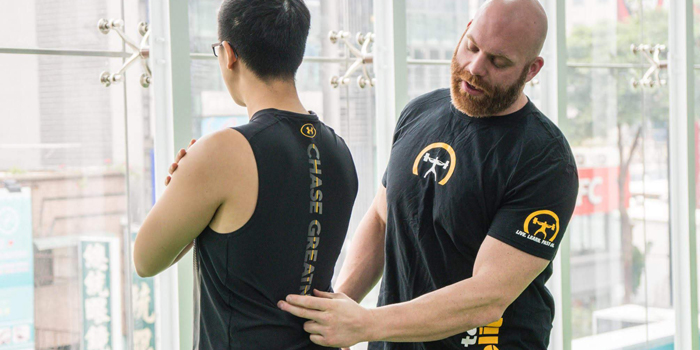
One of the most common and frustrating injuries among powerlifters and other strength athletes are back injuries. In my office, lower back injury is the number one concern among this demographic as well as general population.
Have you ever experienced lower back discomfort or tightness following a big squat? Deadlift? While arching in a bench? Do you see a health care provider for your spine — either due to pain and discomfort, performance, or prevention? If you’re training at any serious level, you likely are. This is simply because there is a fine line between injury and performance. At some point, you must risk injury to truly perform better. This is where intelligent training and taking care of your body ensure that you avoid the former and achieve the latter.
RECENT: How to Communicate Clearly to Potential Clients
One way to accomplish this is to simply program recovery into your strength training. Did you know that by properly selecting your accessory exercises, you can address the limiting factors in the Big Three while also accommodating for your spine's need to recover from training? Whether you realize it or not, some exercises commonly used in training provide the added benefit of aiding spinal recovery, and if programmed intelligently, can make a huge difference in your spine’s health.
Here is a list of my top-5 exercises that I use to help keep the spine healthy during training. For some context, I have severe disc degeneration in my L4 and L5 discs and spinal segments, as well as degeneration in the rest of the lumbar spine.
Utilizing these exercises and other methods have kept me pain-free over the last 16 months and allowed me to train harder and heavier than ever.
1. Lat Pulldowns/Pull-Ups
The latissimus dorsi (lat) is hugely involved as a stabilizer in all three powerlifts. Its proximal attachment to the lumbar spine via the thoracolumbar fascia makes it a massively important spinal stabilizer during the squat and deadlift. Its distal attachment to the arm and shoulder blade allows it to become a shelf of stability during the bench press. For these reasons, the lats take such priority in programming for any strength sport.
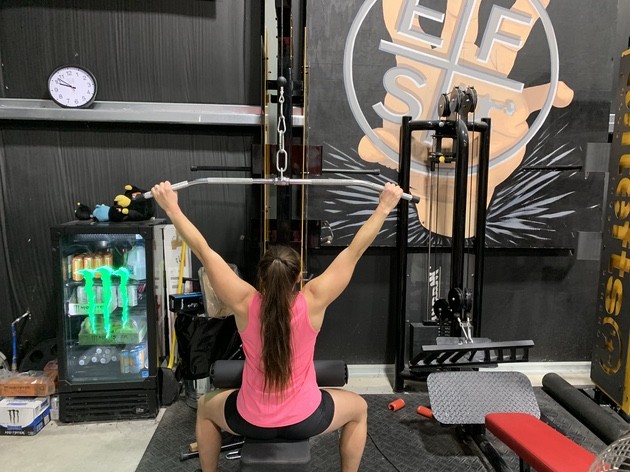
The lat pulldown and pull-up are very common exercises for building the lats — but did you know they can also be used to help jump-start recovery and maintain spinal health?
The next time you do either exercise, spend a second to allow a slight hang at the top of the pulldown (bottom of the pull-up). Focus on feeling the weight cable stack traction the middle back upwards during the pulldown.
In the pull-up, you should feel the middle and lower back separating as the lats tractions upward and the weight of your lower body distracts downward.
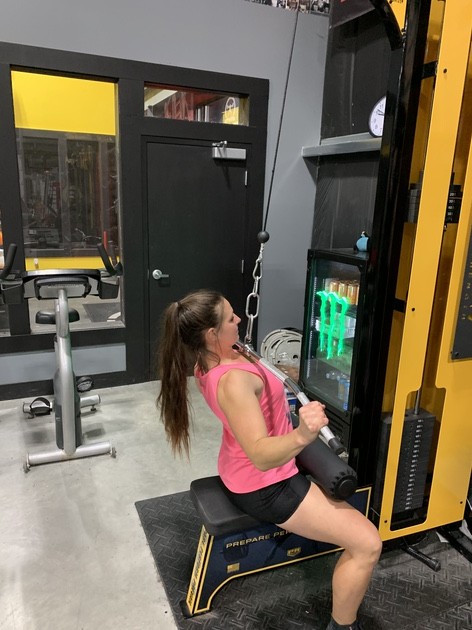
2. Reverse Hyper
The poster child for lower back health in the strength industry has undoubtedly been the reverse hyper. This machine is fantastic for not only strengthening the lower back, but also increasing recovery from compressive loading, and when used intelligently, even rehabbing an injured spine.
With the reverse hyper, there are multiple factors at play that are helping recover the spine. First, because the spine is supported in a prone (face-down) position, there will be minimal compression on the discs and spinal column. This, coupled with the movement from full extension to flexion of the spine, allows for imbibition to occur in a safe manner while using bodyweight, light, or moderate weights.
Imbibition is the process that occurs in which movement creates a pumping mechanism that allows the intervertebral discs and joints of the spine to exchange and replenish fluid. This exchange flushes out “old” fluid that is filled with waste and byproducts of metabolic activity and replenishes with “new” fluid that is rich in oxygen and nutrients. Since motion in the spine creates this fluid pump, being able to move the spine through a range of motion – especially with minimal compression is hugely beneficial for recovery and maintaining spinal health.
Another advantage of the reverse hyper is that it is very good at targeting the spinal erectors, glutes, and hamstrings without huge amounts of load on the spine. The best way to address an injury is to prevent it from happening in the first place — and strengthening the body still remains one of most effective ways to accomplish that.
Heavier sets of less than 12 reps are going to trend more toward building back strength, although there is overlap in each case. What I mean by overlap is, yes, there will still be a distraction and range of motion component involved in heavy reverse hypers.
Yes, you can build strength with light- and moderate-intensity hypers. But keep in mind the goal of the movement when you select it for your programming. Reverse hypers are important enough that they often make it into our programming five to seven times a week.
3. Hanging Leg Raise
The recovery benefits in the spine from hanging leg raises come from a few different factors. In this movement, similar to the pull-up, there is a component of traction occurring from both upper and lower body due to the hanging position of the movement. Furthermore, because there is so much movement occurring at the spine in this exercise, there is also an opportunity to stretch the psoas with this movement.
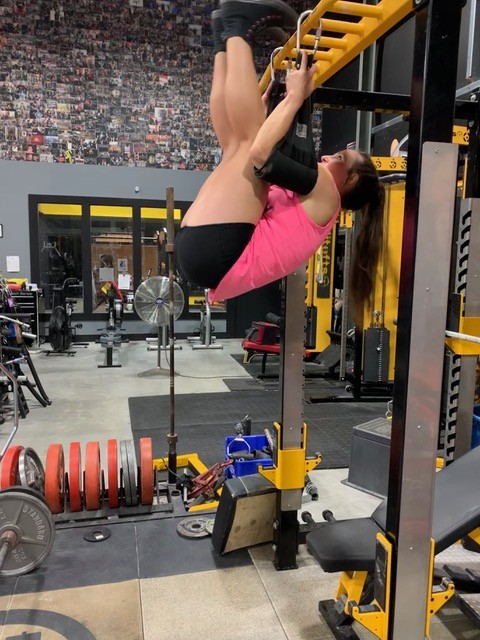
The psoas muscle is the primary flexor of the hip. It attaches to the thigh at the femur and also to the front portion of the lower back. A common problem in this muscle is neurologic shortening and inhibition due to chronic sitting. When this happens, the psoas can cause an increased strain on the lower back and hips. Although the psoas contracts to move the hip into flexion, you may be surprised to hear that it both shortens and lengthens to do this.
During flexion of the hip (i.e., the upward portion of the hanging leg raise), the hip portion of the psoas shortens to lift the leg, while the spinal portion lengthens to allow the spine to flex. This allows a larger hip range of motion. This coupled motion can be seen on the top of the hanging leg raise.
When done correctly with control, the spine moves from a flexed position to an extended position during the downward portion of the hanging leg raise. Because the spine is distracted while hanging in this exercise, we are once again moving the spine through flexion and extension without load — a perfect combination to create imbibition and increase spinal recovery.
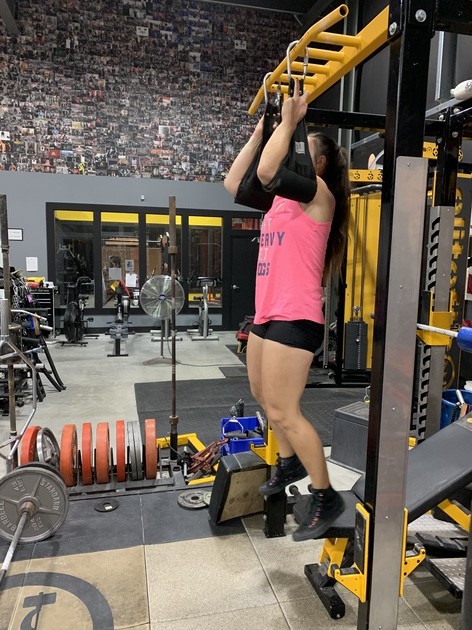
These are typically done for three to four sets of eight to twelve reps. Admittedly, these are not easy for some people. So, to start, do as many toes to the bar as possible and then finish the set off with hanging knees to elbows. As you continue to improve in strength and proficiency, you will be able to complete all reps, toes to bar, and even move to weighted hanging leg raises.
4. Standing Pulldown Abs
Standing pulldown abs is another abdominal movement that makes this list. When doing this movement, it is important that you are giving yourself enough slack to create an upward pull that distracts the spine. Similar to the lat pulldown, the reason this movement can help boost recovery in the spine is that the weight on the stack creates upward traction on the body to limit compressive forces on the spine.
This movement is not entirely deloaded, however, so it is important to pay attention if pain is present and to limit it as necessary. Otherwise, standing pulldown abs provides the same distraction and spinal motion properties as many of the other exercises in this list.
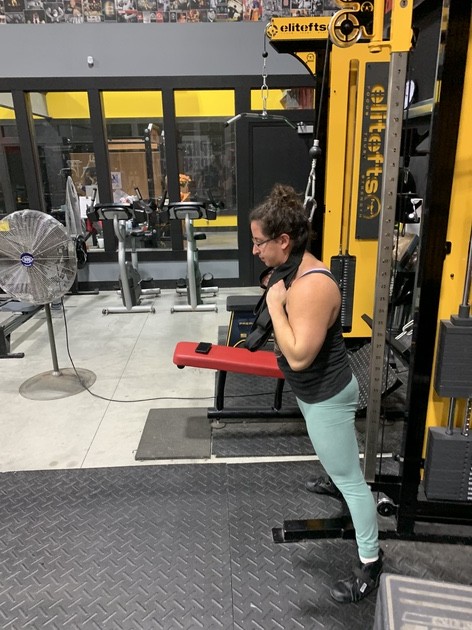
Pulldown abs can be done for three to four sets with rep ranges spanning eight to fifteen. The weight should be enough that your body has to work to ground itself and counterbalance the cable stack just to stand. This is, again, also the reason why it benefits the spine.
5. Belt Squat Marches
The belt squat provides a multitude of movements that can benefit the spine. One such movement is the bell squat march. Utilizing the belt squat distracts the spine due to the downward pull of the load incorporated in the movement.
The march stimulates a movement that is similar to walking, which is highly beneficial to the spine and creates enough movement to produce imbibition in the spine. Furthermore, belt squat marches build up the glutes and further strengthen the posterior chain, making it a great preventative exercise for the lower back as well.
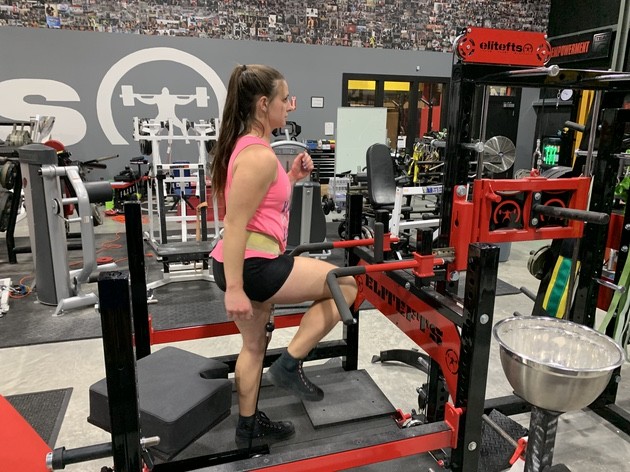
Marches can be done progressively for time (usually 60 to 90 seconds) or for a total number of reps. Marches, as well as any other belt squat variation, can be a great tool during the off-season or during post-meet training, as they all provide distraction of the spine while still being able to work compound multi-joint movement in the lower body.
Bonus Recovery Movements
As a bonus, here are two movements that I utilize either post-workout or on off days to help recover my spine.
One of the best ways I’ve found to help recover the lower back is to create a bastardized version of a traction or inversion table and simply hang from the bottom of a back raise. This is typically done for 20 seconds to a minute. There is no other benefit from this, making it a purely recovery-focused implementation.
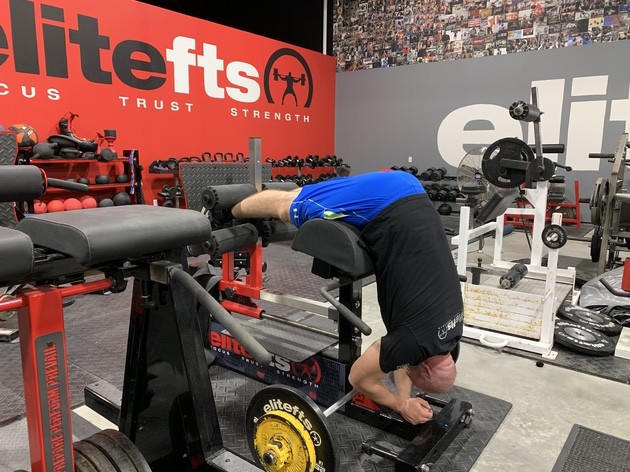
90-90 Breathing
Another great self-recovery method that you can do at home or in the gym for the lower back is lying on your back with your feet propped up on a bench or couch at a 90-degree angle at the hip and knee. From there, focus on your breathing. Try to inhale down into the belly/abdomen. If you are doing this correctly, you will have expansion in all directions in the belly. This is often termed "belly breathing" or diaphragmatic breathing. Do this for five to ten minutes.










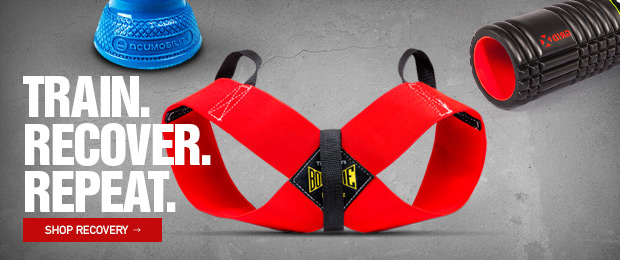
From a strength standpoint, larger hip range of motion is going to work the hip and glutes more as well. If someone is barely clearing the floor (even with higher loads), they are spending much more time with both feet on the ground and less time in a single leg stance which is what this movement is intended to challenge. Not every belt squat loads the same but with ours, after 90 seconds of marching with 2 plates and a quarter loaded, my glutes are toast.
"Imbibition is the process that occurs in the spine in which movement in the spine acts as a pump to replenish fluids in the intervertebral discs and joints of the spine. These fluids include cerebral spinal fluid, lymphatic fluid, and blood."
I don't think you want cerebral spinal fluid in the discs or joints of the spine. I think if you have it there you've got a big problem! CSF is a fluid surrounding & protecting the brain and spinal column; the dura mater maintains it's volume around those structures and you don't want it leaking out.